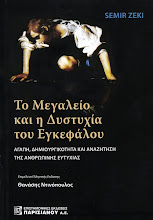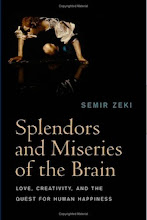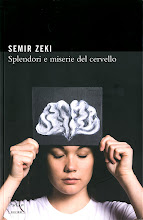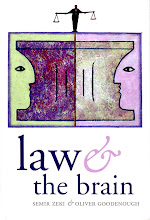Francis Bacon claimed that he wanted to
give “a visual shock”, and his paintings over the decades never seem to have
departed from that aim. One of his first exhibitions, in New York, was
described as a “chamber of horrors” and Margaret Thatcher, perhaps echoing the
views of many outside the art world, once described him as “that man who paints
those horrible pictures”. As I understand it, most people (even those who
admire his painterly style) would prefer not to have his paintings hanging in
their living rooms.
Last week, his three-panelled painting,
entitled Three Studies of Lucian Freud,
produced another shock – a financial one. It fetched a record price in New
York, being sold for the sum of $142.4 millions. What is it that attracted
buyers to spend so much (the bidding started at $80 million)?
I believe that Bacon subverted the brain’s normal
representation of faces and bodies, which is what turned his pictures into
shocking displays. The brain, it seems, cannot easily adapt to departures from what
constitutes a normal face; it cannot adapt easily to the disfigured faces
and bodies that Bacon specialized in, as a means of making images of the
violent reality which, according to him, was so prevalent in the world. Hence
the enduring shock effect that he produced.
Most of the discussions I heard and
articles I read on this sale revolved around the topic of money. It is not that
buyers were only speculating. Rather “deep-pocketed” buyers were also ready, it
seems, to splash out considerable sums to buy paintings for their national
museums or their homes. I am inclined to the view that when it comes to
spending such vast sums, the long-term value is naturally important but cannot
be the only or even dominant factor. So what, beyond the prestige of Bacon,
drove prices so high? How could paintings reviled through the use of phrases
like “horrors” or “mutilated corpses” or “extremely repellent”, which so many (including
one on the radio last week) declared they would rather not see hanging in their
living rooms, be so much sought after.
Perhaps we have a very deep-seated
fascination with horror, especially when it is so evocatively depicted. Perhaps
those who yearn to view such paintings are an infinitely more sophisticated and
refined, indeed artistic, version of those who jam the roads on their way to see a crashed plane.
There are, of course, huge artistic qualities to Bacon’s work – they are
formally masterful works, with a quite spectacular, and often unusual,
combination of colours. But the fact remains that they also depict mutilated
and savaged faces and bodies – viewing of which almost certainly stimulates
strongly sub-cortical centres such as the amygdala and the insula, which
seemingly respond to fear and horror. And let us not forget that Bacon once
said that he was not appealing to the intellect: “I make paintings that the
intellect cannot make” he once said, which also implies that he was appealing
to something more primitive in his work. In his quite wonderful book on Francis
Bacon, Michael Peppiat says that Bacon’s aim was to deliver a visual shock
before things got spelled out in the brain (or words to that effect). Perhaps,
combining the aesthetically pleasing colours with the mutilation that he so
consistently depicted makes the latter more palatable – and even pleasing. The
more so if one knows that such a combination is a good place to park one’s
money.









 Contact us
Contact us